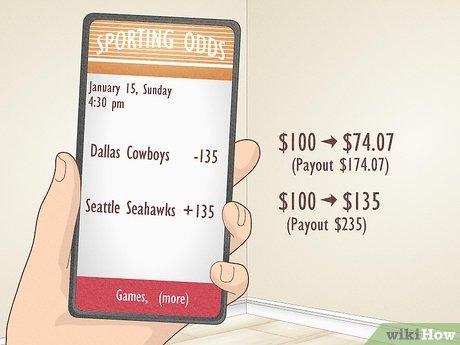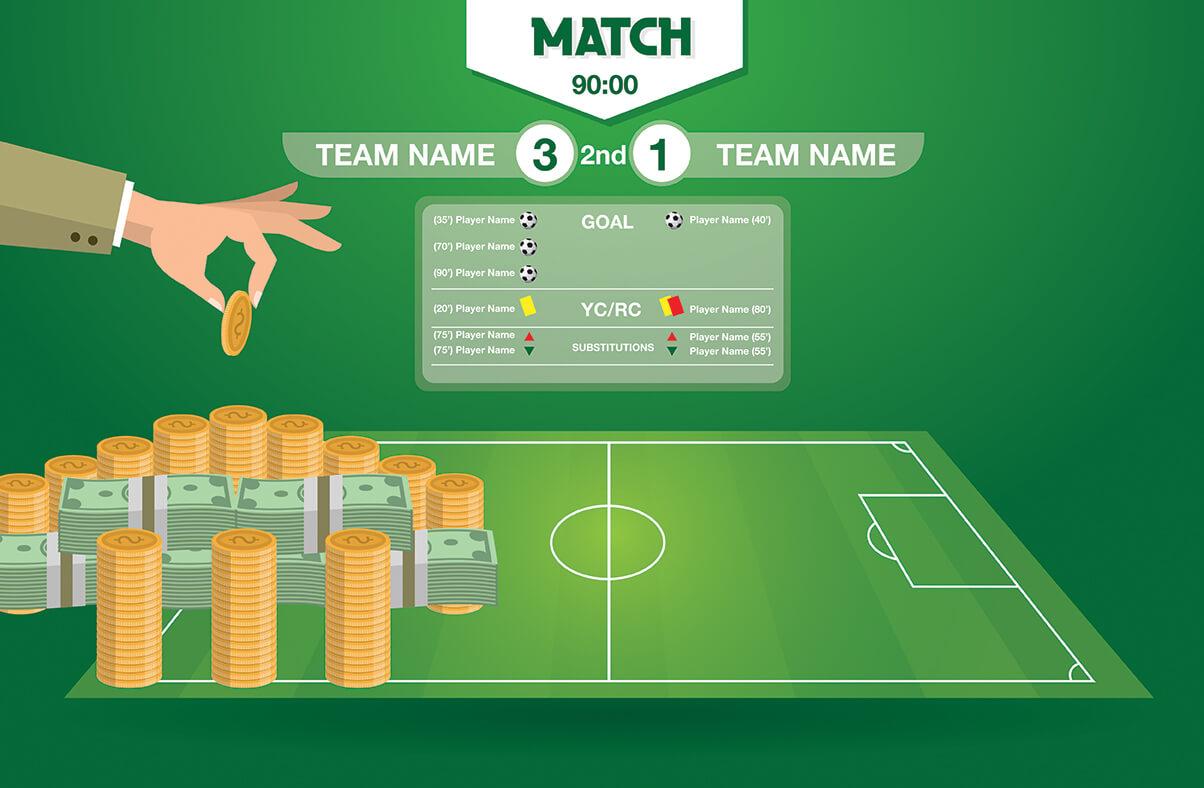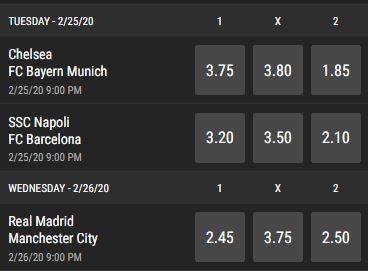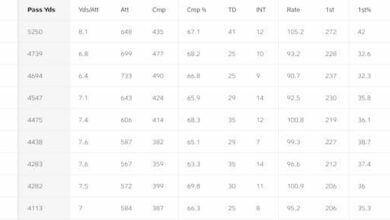How to read soccer betting odds

Understanding the Game Beyond the Field: A Guide to Reading Soccer Betting Odds
Soccer, often dubbed the beautiful game, captivates millions around the globe with its blend of skill, strategy, and passion. As fans cheer for their favorite teams and players, a different kind of excitement brews in the betting world. For those eager to elevate their soccer experience, understanding betting odds becomes pivotal. But what do these numbers really mean? Whether you’re a seasoned bettor or a curious newcomer, navigating the landscape of soccer betting odds can seem daunting at first. In this article, we will demystify the various formats of betting odds, explain how they are calculated, and provide you with the tools necessary to make informed decisions on your betting journey. Join us as we explore this intriguing intersection of sport and strategy, where a single goal can lead to victory in more ways than one.
Table of Contents
- Understanding the Basics of Soccer Betting Odds
- Deciphering Different Types of Betting Odds
- Strategies for Analyzing Odds and Making Informed Bets
- Common Mistakes to Avoid When Interpreting Betting Odds
- Q&A
- Insights and Conclusions

Understanding the Basics of Soccer Betting Odds
When it comes to soccer betting, understanding how to interpret betting odds is crucial for making informed decisions. Odds are typically presented in three formats: decimal, fractional, and moneyline. Each format provides the same information about potential payouts but caters to different preferences and regions. For instance, decimal odds show the total payout for a winning bet, including the stake, making it easy to calculate profits. If the odds are 2.50, a successful $10 bet would yield $25 in total ($10 stake + $15 profit). On the other hand, fractional odds, common in the UK, represent the profit relative to the stake. For example, odds of 5/1 mean that for every $1 wagered, the bettor stands to win $5. Moneyline odds, often used in the United States, indicate how much needs to be wagered to win $100 or how much one can win from a $100 bet. A +200 moneyline means a $100 bet could yield $200 profit, while -150 means a bettor needs to wager $150 to win $100.
To further enhance your betting strategy, it’s essential to familiarize yourself with the implications of the odds in soccer. Lower odds indicate a higher probability of an outcome, which often correlates with favorites in matches. Conversely, higher odds suggest lower probabilities, typically associated with underdogs. This nuanced understanding allows bettors to evaluate risk against potential reward effectively. Additionally, odds can fluctuate due to various factors such as team form, injuries, and betting volume. For example, if significant betting activity supports one side, the odds may shift to reflect this increased probability of winning. Keeping an eye on these movements and understanding the market can provide valuable insights into which bets to place. Below is a simplified example of different odds formats and their winnings:
| Odds Format | Example Odds | Potential Payout for $10 Bet |
|---|---|---|
| Decimal | 2.50 | $25 ($10 stake + $15 profit) |
| Fractional | 5/1 | $60 ($10 stake + $50 profit) |
| Moneyline | +200 | $300 ($10 stake + $290 profit) |

Deciphering Different Types of Betting Odds
Understanding betting odds is crucial for anyone looking to engage with soccer betting. There are three primary formats used globally: decimal odds, fractional odds, and American odds. Each type of odds provides a unique way to represent the risk and reward of a bet. Decimal odds, commonly used in Europe, show the total return on a bet, including your stake, which can make calculations straightforward. For instance, if the odds are 2.00, a bet of $10 would return $20, indicating a $10 profit. Conversely, fractional odds use a ratio format, popular in the UK, to illustrate potential profit relative to the stake. For example, odds of 5/2 mean a bettor could win $5 for every $2 wagered.
American odds can be a bit more intricate as they operate on a moneyline system primarily found in the United States. They represent either how much you need to bet to win $100 (negative odds) or how much you would win from a $100 bet (positive odds). For example, odds of -150 mean you would need to wager $150 to earn a $100 profit, whereas +150 suggests a $100 bet could yield a $150 profit. To help clarify these differences, see the table below:
| Odds Format | Description | Example |
|---|---|---|
| Decimal | Total return on a bet | 2.00 |
| Fractional | Potential profit relative to stake | 5/2 |
| American | Wager needed to win or potential profit | -150 or +150 |

Strategies for Analyzing Odds and Making Informed Bets
Understanding the odds presented in soccer betting is crucial for making well-informed decisions. Various betting platforms utilize different odds formats, which can affect both your understanding and the potential profitability of your bets. To start, take note of the common odds types: decimal, fractional, and moneyline. Each format can represent the same value, yet they require different calculations to determine potential payouts. For instance, a decimal of 2.00 indicates that for every $1 bet, you could win $1 in profit, while a fractional format of 1/1 denotes the same winning potential. Familiarizing yourself with these formats is the first step in analyzing odds effectively.
Moreover, it’s essential to look beyond the surface odds offered at a betting site. Analyze the context surrounding the match, including team form, injuries, and historical data. Collecting data from reliable sport analysis websites can provide deeper insights into teams’ performances and betting trends. Comparing odds across multiple betting platforms can also reveal discrepancies, which might indicate value bets. Using tools like tables to track your analysis can streamline your decision-making process. Consider this simple table as an example of how to organize key factors:
| Team | Last 5 Matches | Injuries | Current Odds |
|---|---|---|---|
| Team A | W, L, W, D, W | Player X | 2.50 |
| Team B | L, D, L, W, D | None | 3.00 |
By consistently applying these analytical strategies and keeping abreast of the latest trends, you can enhance your betting strategy and potentially increase your success rate in soccer betting. For more expert insights into these techniques and the evolution of odds, visit BetReward.

Common Mistakes to Avoid When Interpreting Betting Odds
When diving into the world of soccer betting odds, one common error is misunderstanding the odds format. It’s essential to recognize that odds can be presented in various forms, such as decimal, fractional, or moneyline. For instance, decimal odds provide a straightforward way to calculate potential returns, where the odds number represents the total payout for a winning stake. On the contrary, fractional odds might seem confusing but are quite popular, especially in the UK. Misinterpreting these formats can lead to miscalculations and misguided bets, so take the time to familiarize yourself with how each one works.
Another frequent misstep is neglecting to consider both the implied probability and the value of the bet. The implied probability derived from the odds shows the bookmaker’s view of how likely an event is to happen. However, a clever bettor should compare this probability with their own assessment of the event’s likelihood. If you find value—meaning the actual chance of an event occurring is higher than the implied probability—then it may be worth placing your wager. Here’s a quick reference table to illustrate this concept:
| Odds Format | Implied Probability (%) |
|---|---|
| 2.00 (Decimal) | 50% |
| 1/1 (Fractional) | 50% |
| -100 (Moneyline) | 50% |
| 1.50 (Decimal) | 66.67% |
By avoiding these typical mistakes and getting a grip on odds formats and implied probabilities, you can make more informed betting decisions and potentially enhance your overall betting experience.
Q&A
Q&A: How to Read Soccer Betting Odds
Q1: What are soccer betting odds, and why are they important?
A1: Soccer betting odds represent the probability of certain outcomes in a match and dictate how much you can win from your wager. Understanding these odds is vital because they serve as a roadmap, guiding you towards informed betting decisions. The higher the odds, the less likely the outcome is perceived to be, while lower odds suggest a more probable event.
Q2: What are the common formats for betting odds?
A2: Betting odds typically come in three formats: decimal, fractional, and American.
- Decimal odds (common in Europe and Australia) show the total payout you would receive for every unit wagered. For instance, odds of 3.00 mean that for every $1 you bet, you’ll receive $3 if you win, which includes your initial stake.
- Fractional odds (popular in the UK) are expressed as a fraction, such as 5/1. This means for every $1 you stake, you’ll earn $5 if your bet is successful, plus your original bet back.
- American odds (used in the US) are displayed as either positive or negative numbers. Positive odds (e.g., +200) indicate profit on a $100 bet, while negative odds (e.g., -150) show how much you need to wager to win $100.
Q3: How do I translate these odds into a probability?
A3: Converting odds to probability helps you understand the likelihood of outcomes.
For decimal odds, the formula is:
[ text{Probability} = frac{1}{text{Odds}} times 100 ]
For fractional odds:
[ text{Probability} = frac{text{Denominator}}{text{Numerator} + text{Denominator}} times 100 ]
American odds can be trickier. For positive odds:
[ text{Probability} = frac{100}{text{Odds} + 100} times 100 ]
And for negative odds:
[ text{Probability} = frac{text{Absolute Odds}}{text{Absolute Odds} + 100} times 100 ]
Q4: What are the different types of bets I can place?
A4: Soccer betting offers a variety of betting options:
- Match Result (1X2): Bet on either team to win (1 for Home, 2 for Away) or if the match will end in a draw (X).
- Over/Under Goals: Predict whether the total goals scored in the match will be over or under a specified number.
- Both Teams to Score (BTTS): Wagering that both teams will score at least one goal during the match.
- Draw No Bet: You will win your stake back if the match ends in a draw; thus, you’re only betting on one team to win.
Q5: Are there additional factors to consider when reading odds?
A5: Absolutely! Remember to factor in elements like team form, player injuries, head-to-head statistics, and weather conditions. These can influence betting odds and the potential outcomes of a match. In essence, while odds provide a framework, the unpredictable nature of soccer means having a broader perspective will enhance your betting strategy.
Q6: How can I manage my betting responsibly while using odds?
A6: Responsible betting is crucial. Set a budget for yourself and stick to it, regardless of the odds or your confidence levels. Understand that betting should enhance your enjoyment of the game, not replace critical thinking or lead to financial strain. Consider using a staking plan to manage how much you risk per bet based on your bankroll.
Q7: Where can I improve my understanding of betting odds?
A7: Many betting platforms provide educational resources, including tutorials and articles about odds. Additionally, forums and blogs offer insights from experienced bettors. Engaging with these resources can enhance your knowledge and betting skills, ultimately leading to a more enjoyable and responsible betting experience.
Armed with these insights, you’ll be better prepared to read and interpret soccer betting odds, setting the stage for informed and engaging wagers. Happy betting!
Insights and Conclusions
As we conclude our exploration into the world of soccer betting odds, it’s clear that understanding these numbers is akin to learning a new language—one that can unlock the thrill of the game while empowering your betting decisions. From grasping the basics of fractional, decimal, and American odds to interpreting implied probabilities and the significance of line movements, the ability to decipher these figures is essential for any soccer enthusiast looking to enhance their experience.
As you venture into the exciting arena of betting, remember that knowledge is your greatest ally. Just as players analyze past performances and strategies, take the time to study the odds and the underlying factors that influence them. Whether you’re placing a casual bet with friends or diving into more serious wagering, stay informed and adapt your strategies accordingly.
So, as the next match day approaches, arm yourself with the understanding you’ve gained here and approach your bets with confidence. whether your predictions align with the scoreboard or not, the beautiful game continues to provide endless enjoyment, drama, and excitement. Happy betting!



